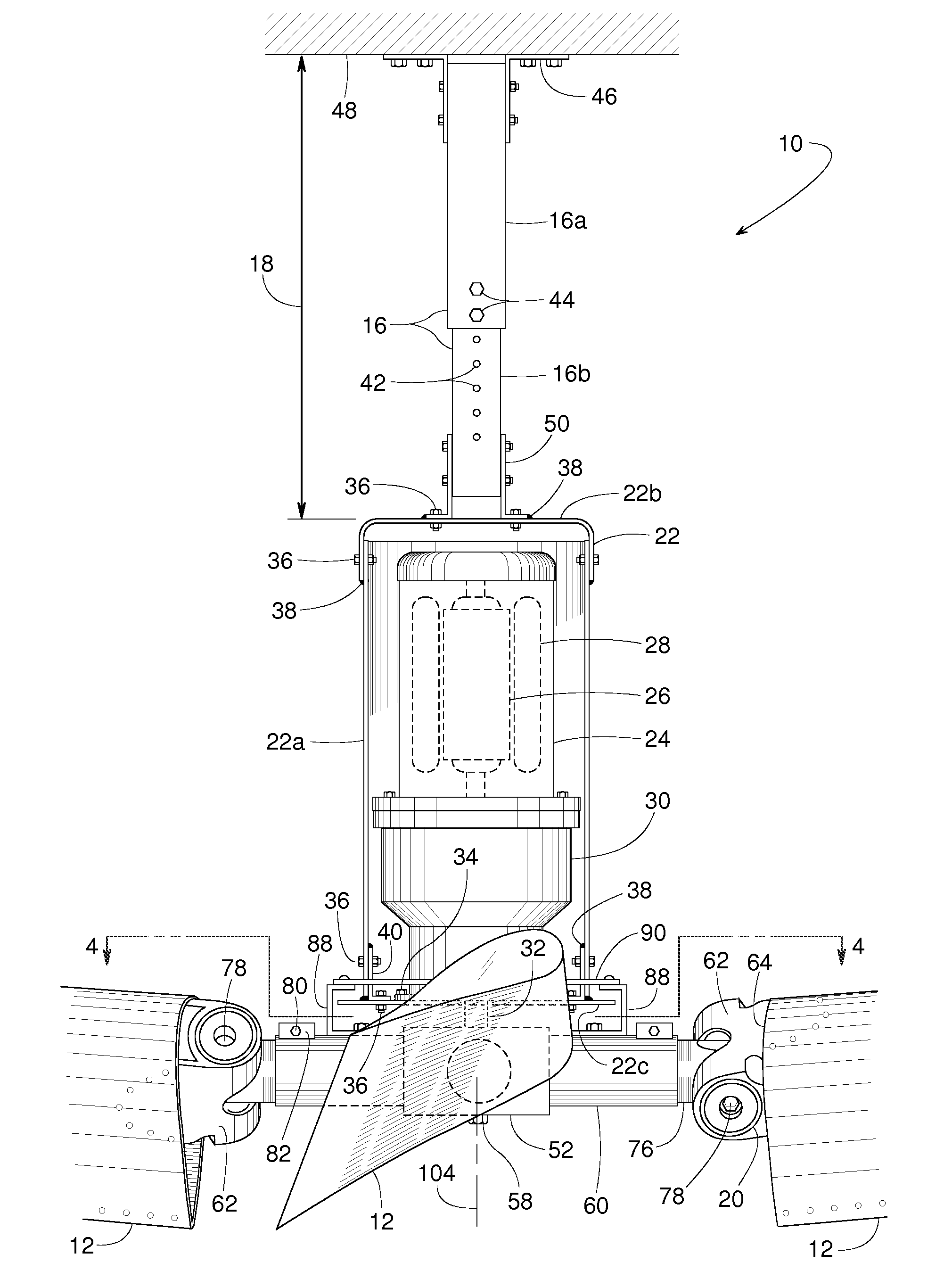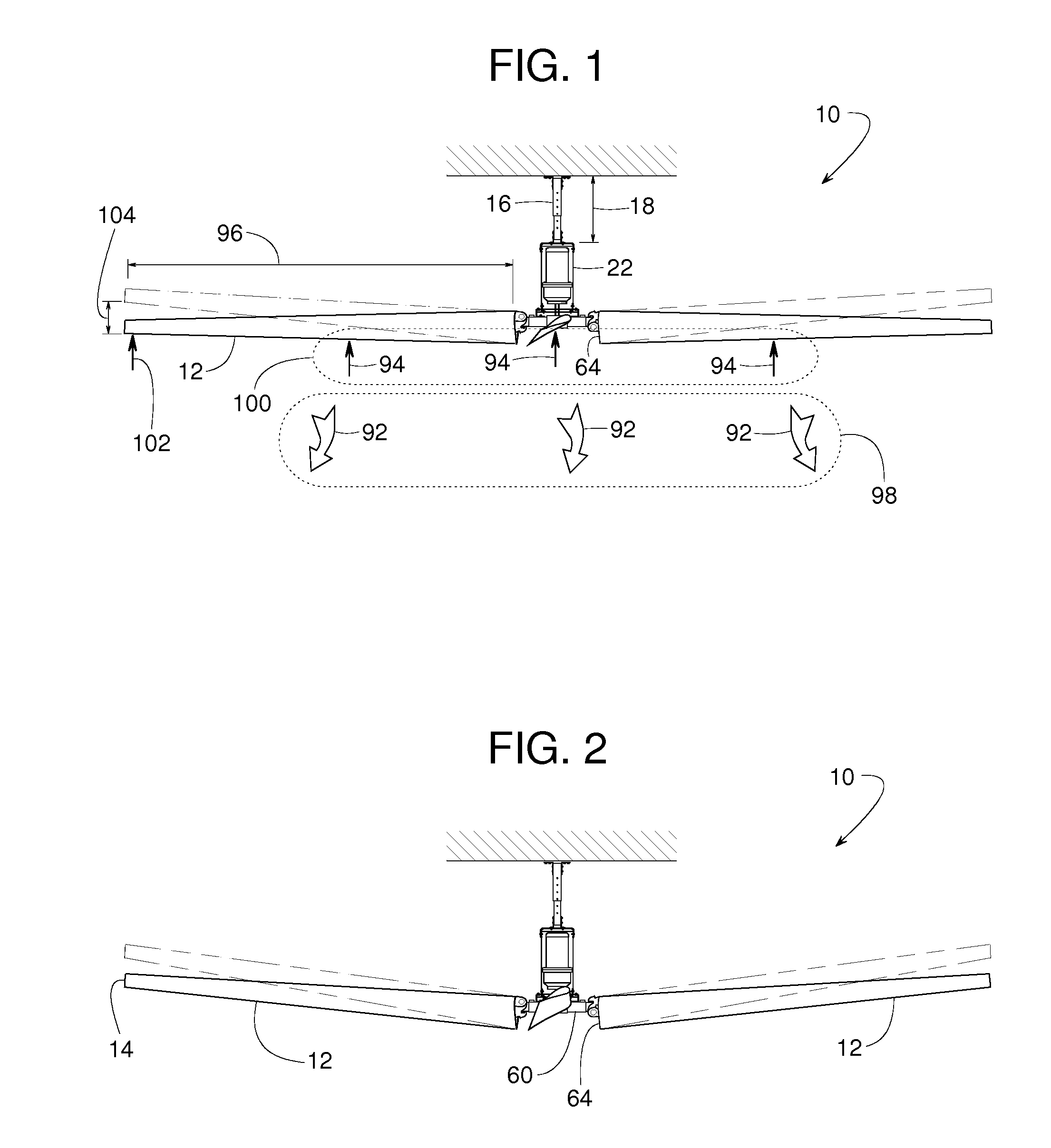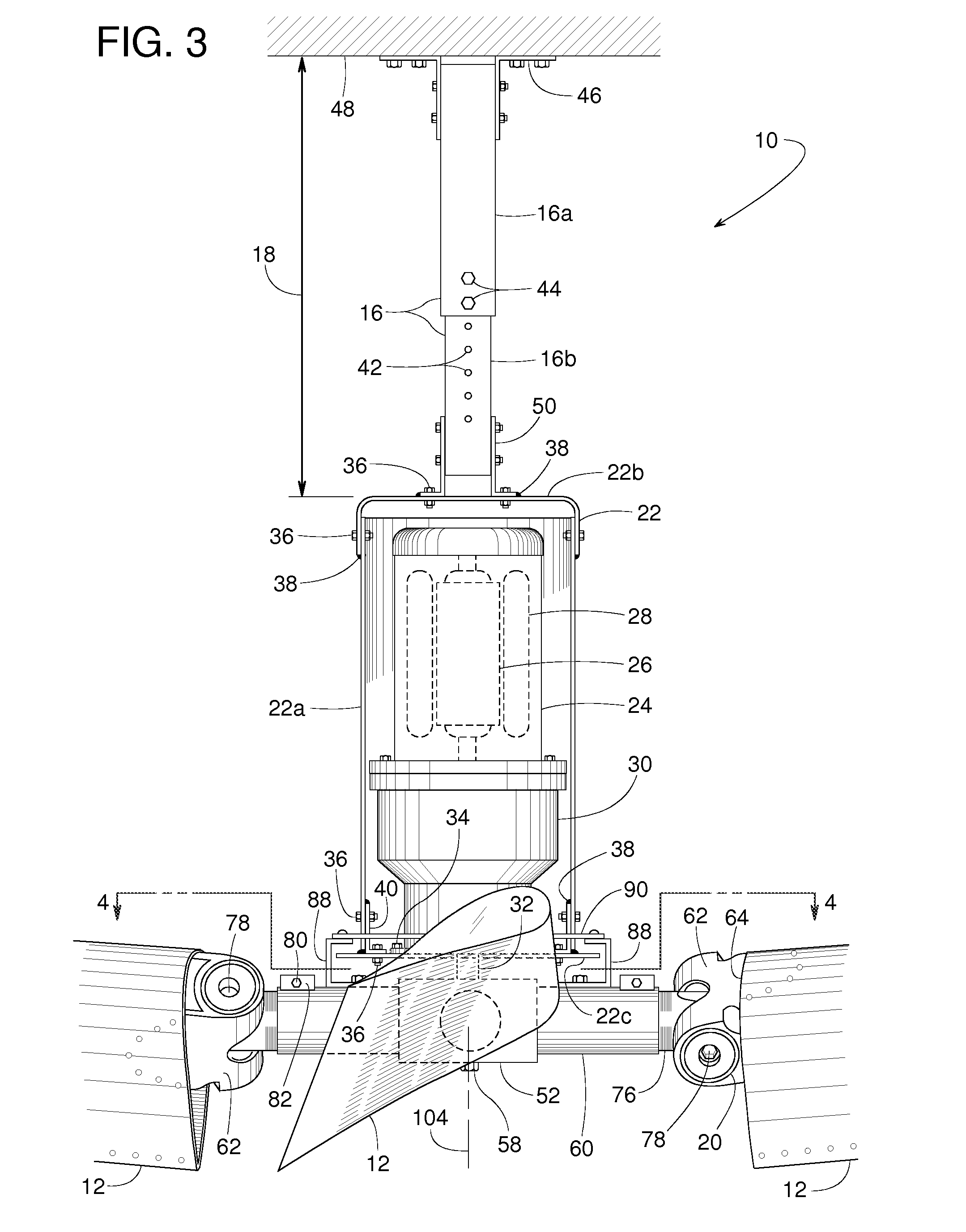Industrial ceiling fan
a ceiling fan and industrial technology, applied in the field of ceiling fans, can solve the problems of wide open areas of a building, inability to effectively ventilate large areas, etc., and achieve the effect of uniform distribution of airflow
- Summary
- Abstract
- Description
- Claims
- Application Information
AI Technical Summary
Benefits of technology
Problems solved by technology
Method used
Image
Examples
Embodiment Construction
[0021]A ceiling fan 10, illustrated in FIGS. 1-5, includes various features that make fan 10 particularly suited for ventilating large open areas in a building such as in a factory or warehouse. Fan 10, for instance, has fan blades 12 that can be five to twelve feet long (or longer) to ventilate a broad area below the fan 10; fan blades 12 can be tilted lengthwise with a blade tip 14 raised so that fan 10 can cover an even broader area; each fan blade 12 has a shape that varies along its length to promote airflow underneath the full diameter of the fan 10; a hanger 16 has an adjustable length 18 so that fan 10 can be installed at an elevation where fan blades 12 can avoid pipes, hanging light fixtures, overhead beams and various other obstacles often found in industrial buildings; a resilient connector 20 (FIGS. 3 and 4) provides fan blades 12 with strain relief and additional flexibility; and fan 10 includes a bracket assembly 22 with redundant or backup connections for safety.
[002...
PUM
 Login to View More
Login to View More Abstract
Description
Claims
Application Information
 Login to View More
Login to View More - R&D
- Intellectual Property
- Life Sciences
- Materials
- Tech Scout
- Unparalleled Data Quality
- Higher Quality Content
- 60% Fewer Hallucinations
Browse by: Latest US Patents, China's latest patents, Technical Efficacy Thesaurus, Application Domain, Technology Topic, Popular Technical Reports.
© 2025 PatSnap. All rights reserved.Legal|Privacy policy|Modern Slavery Act Transparency Statement|Sitemap|About US| Contact US: help@patsnap.com



